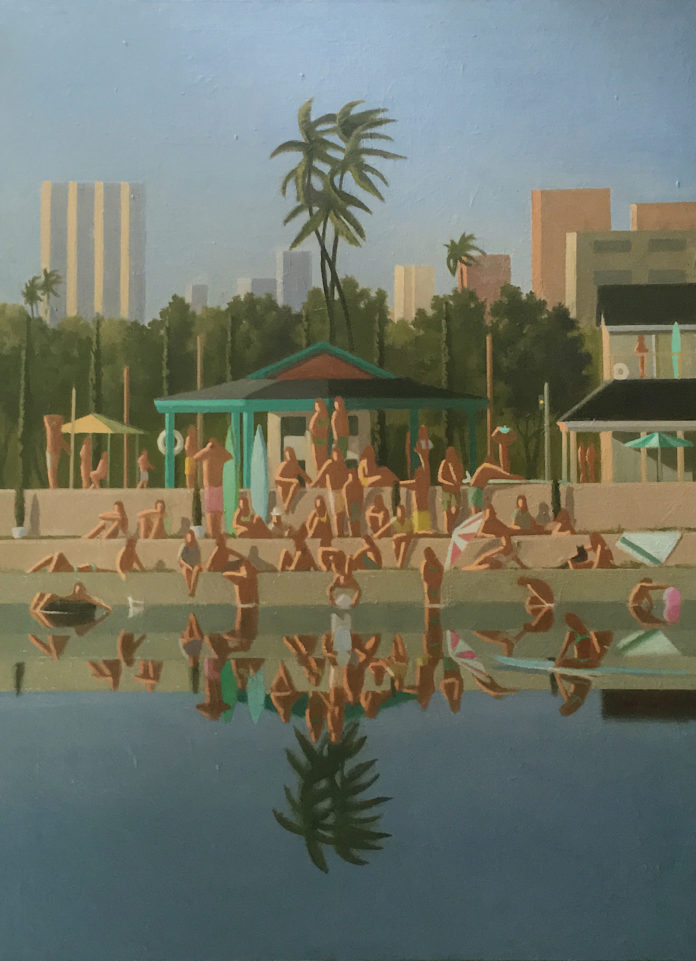“The Sleep of Reason: Keith Kattner and Anthony Haden-Guest” is on view through January 13, 2021 at Paul Fisher Gallery, West Palm Beach, Florida. The exhibition is curated by Debbie Dickinson, and proceeds support the disaster relief efforts of the American Red Cross.
Keith Kattner (b. 1961) retired from a successful neurosurgery practice at 49 to pursue his first love—art. A prolific researcher, residency program director, and co-founder of the Central Illinois Neuroscience Foundation, Dr. Kattner moved in 2010 to Manhattan for two years to immerse himself in the art scene and the Metropolitan Museum of Art.
Seven years and 600 paintings later, he leads a bohemian existence showing his work in New York galleries. He says, “It took me a considerable amount of effort to realize that the rules of art don’t always comply with the rules of science. I had to decide which set of rules would supersede the other.”
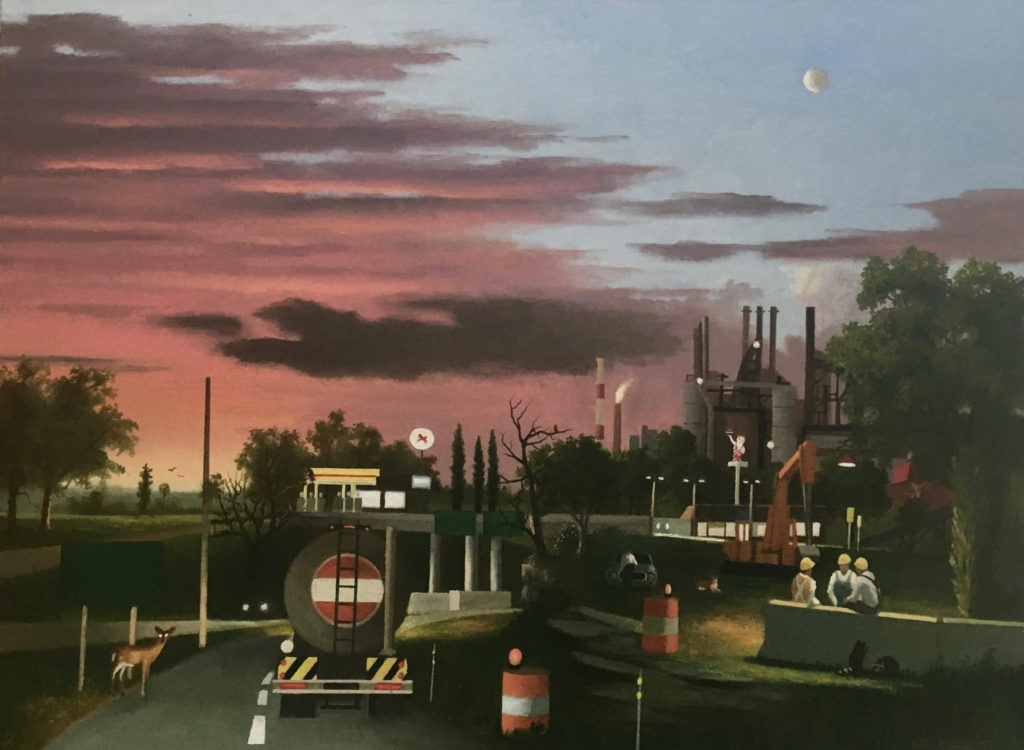
Now oil paintings from Kattner’s “Entropy, Classical,” and “Reflection” series are being exhibited alongside drawings by Anthony Haden-Guest (b. 1937), the British critic, writer, reporter, and longtime resident of New York, who is presenting his recent “Cartoonery, Apparitions Lucky Stiffs” and “Neons” series.
Together this pair of artists have demonstrated how art reflects and responds to times of fear and uncertainty, and they have reminded us that if we don’t appreciate history, it will repeat itself. Their exhibition title was inspired by Francisco Goya’s ”The Sleep of Reason Produces Monsters”—one of eighty aquatints that comprise his famous series ”Los Caprichos” (1797–99). Kattner and Haden-Guest share Goya’s fascination with the conflict between reason and irrationality, satire, and protest.
In Kattner’s work, there is an unnerving foreboding of something bad just over the horizon, something about to happen to a rational society that has no idea of the looming crisis that the artist’s subconscious felt. His scenes range from serene [such as “Classical Study 2 (After Lorrain)”] to chaotic.
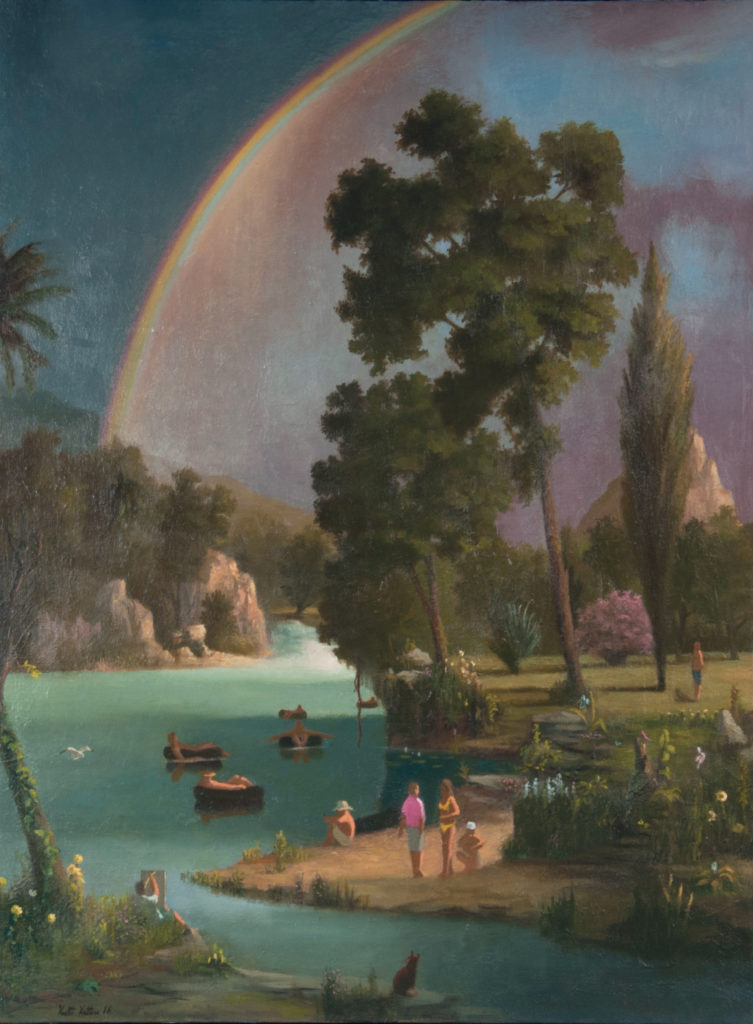
“Entropy” is especially timely now because, as we know, things fall apart and chaos is inevitable. Kattner juxtaposes rural settings with urban sprawl, the changing seasons, and the idea of disorder.
He explains: “Entropy wants randomness and decay. If we put a garden behind our house and don’t take care of it, it will end up as weeds. When we as human beings try to organize things, we’re really fighting the forces of entropy.”
Kattner credits great Surrealists as his inspiration (Salvador Dalí in particular): “First I imitated reality, then I worked myself into the process of painting from my subconscious. All images and elements are moved around until the perfect balance has been achieved. A total rational painting is achieved. There are no flaming giraffes in my world.”
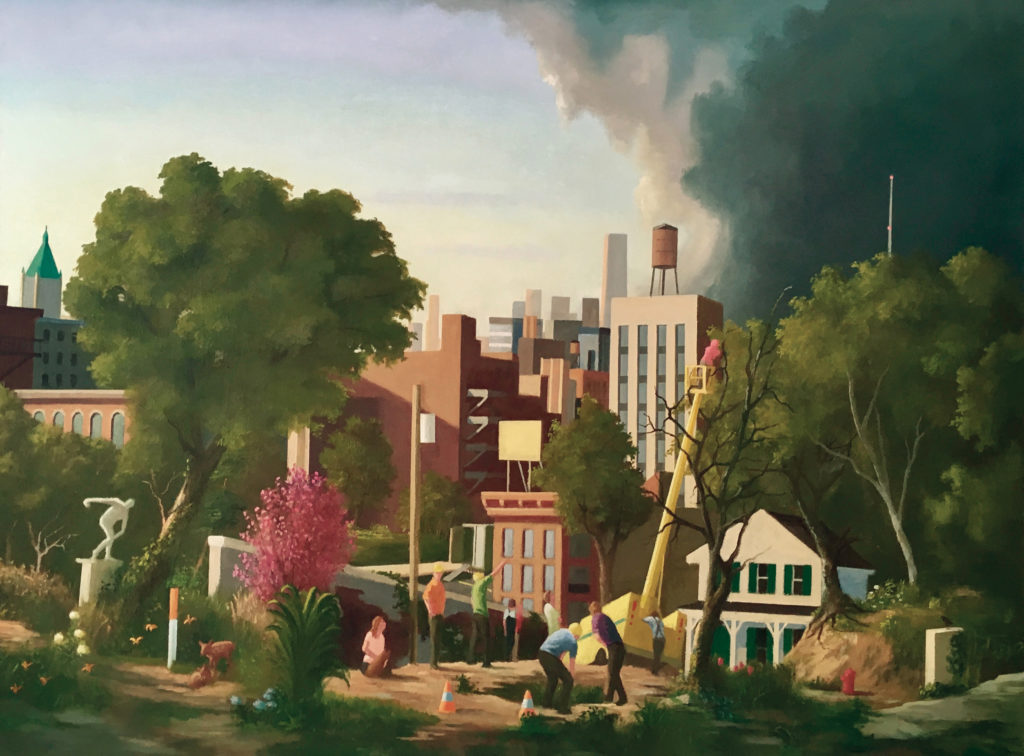
Kattner also explores the notion of inevitable change and growth. For example, in the painting “Thor and the Little Red Rooster,” we see the idyllic home setting interrupted by man as well as nature. Not only are the construction workers a source of change and upheaval, but so is something as natural as the lightning bolt’s indication of an electrical storm.
These days the absolute devastation of climate change is all around us and Kattner’s painting serves as a sort of artistic warning. Nature erupts with bustling man-made change. The human beings are, in this painting, the villains, so to speak.
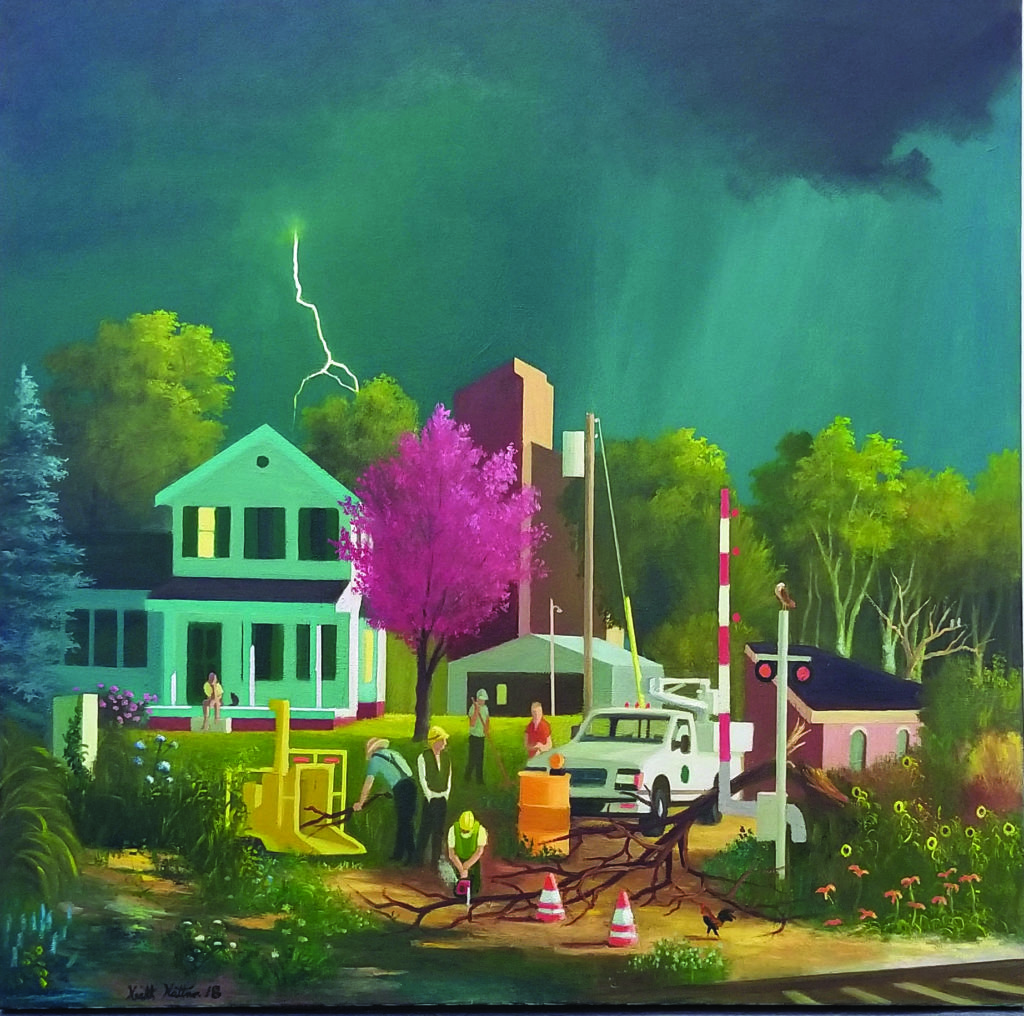
Learn more about “The Sleep of Reason” at http://paulfishergallery.com.
For more about Kattner, visit keithkattnerartist.com.
Additional articles on the artist:
- palmbeach.floridaweekly.com/articles/surgical-precision/
- spinesection.org/news-detail/education-of-artist-keith-kattner
- whitehotmagazine.com/articles/keith-kattner-there-back-again/3823
> Sign up to receive Fine Art Today, our free weekly e-newsletter
> Click here to subscribe to Fine Art Connoisseur magazine, so you never miss an issue

